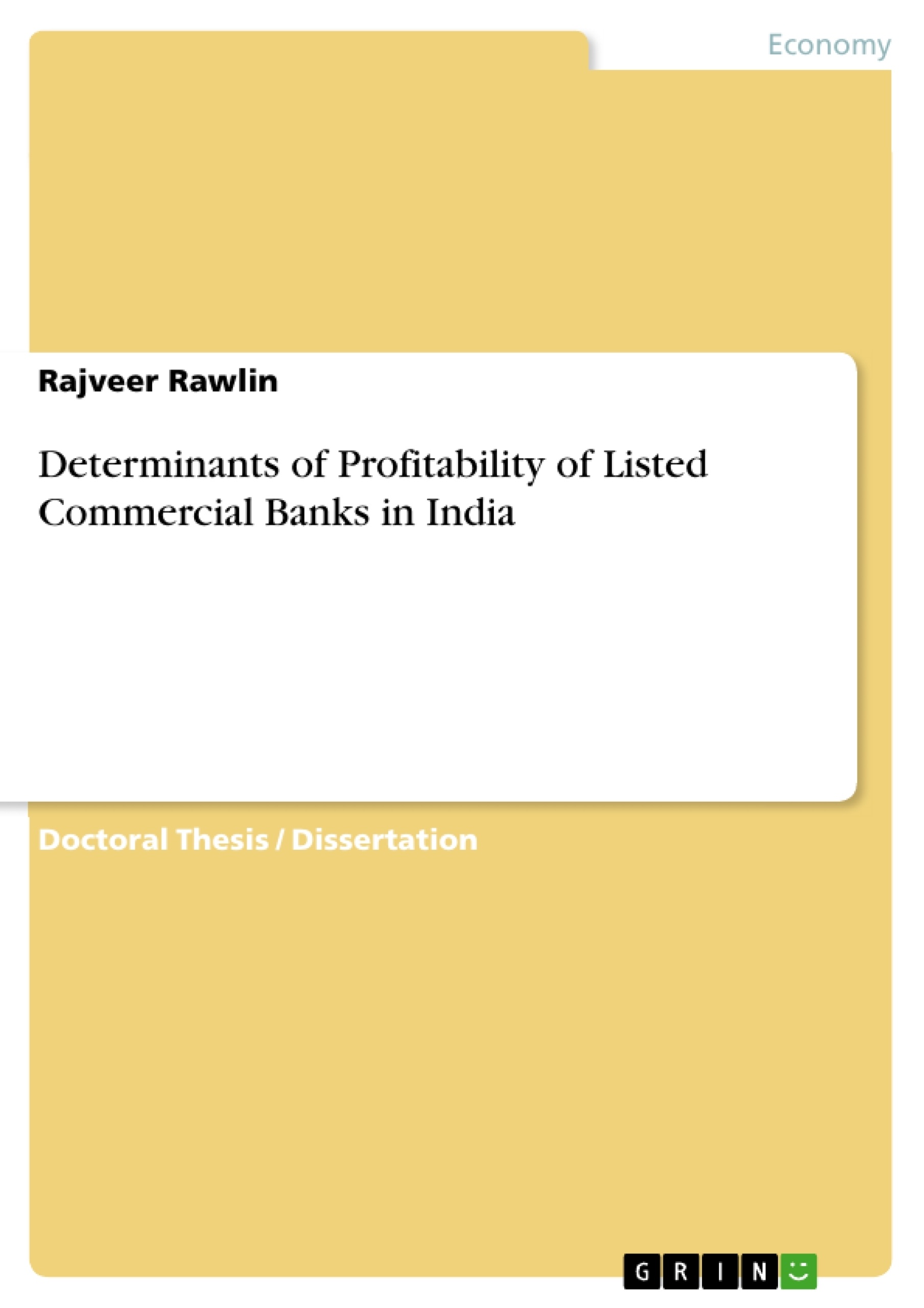This study seeks to understand the impact of a series of key internal determinants of the profitability of listed commercial banks in India. Following are the research questions raised in this regard: Are there differences in key performance measures of private and public sector banks? Does the size of the bank affect bank profitability? Does the bank’s lending activity and income generation capability affect its profitability? Does the productivity of the bank impact its profitability? Does the bank’s asset quality and capital adequacy affect its profitability? Can bank profitability be forecasted from determinants?
The banking industry in India is diverse in nature. There are more than sixty listed commercial banks in India. These include banks in the public and private sector and the banks are of varying size and profitability levels. As noted early, the Indian banking system is faced with severe asset quality issues. The banking system has been flooded with non-performing assets which have significantly eroded the bank margins. Recent adverse developments in the banking sector such as lending scams and questionable advances to troubled segments of the economy have dominated the financial press. While this being so, this research is aimed at examining the contributing factors of profitability in banks.
Key measures of bank profitability include the return of assets, return on equity and net interest margin. There are several possible drivers of bank profitability. These include asset quality, capital adequacy, liquidity, productivity and income. While several studies till date have looked at key determinants of bank profitability, very few studies have compared the effect of key determinants for a larger cross section of banks that represent the banking sector in India as a whole. Hence an attempt has been made in this study to know the key drivers of profitability of the banking sector. The study also looks at the similarities or the differences of the influence of selected determinants on profitability measures across the sample of banks selected for research. This study also compares the key drivers of bank profitability for public and private sector banks and an attempt is made to develop models to forecast bank profitability from key determinants.
Inhaltsverzeichnis (Table of Contents)
- Chapter 1: Introduction
- 1.1: Indian Banking Scenario
- 1.2: Profitability of Commercial Banks
- 1.3: Objectives of the Study
- 1.4: Scope of the Study
- 1.5: Significance of the Study
- 1.6: Research Methodology
- 1.7: Organization of the Thesis
- Chapter 2: Review of Literature
- 2.1: Theoretical Framework
- 2.2: Empirical Studies
- Chapter 3: Research Design and Methodology
- 3.1: Population and Sample
- 3.2: Data Collection
- 3.3: Data Analysis Techniques
- Chapter 4: Data Analysis and Interpretation
- 4.1: Descriptive Statistics
- 4.2: Correlation Analysis
- 4.3: Regression Analysis
- Chapter 5: Findings and Discussion
Zielsetzung und Themenschwerpunkte (Objectives and Key Themes)
This doctoral thesis examines the determinants of profitability for listed commercial banks in India. The research investigates the impact of various factors, such as asset quality, capital adequacy, liquidity, and operational efficiency, on bank profitability. The study aims to contribute to the understanding of the Indian banking sector's dynamics and provide insights for policymakers and bank managers.
- Profitability of commercial banks in India
- Impact of asset quality, capital adequacy, liquidity, and operational efficiency on bank profitability
- Financial performance of Indian banks
- Factors influencing bank profitability in an emerging market context
- Regulatory framework and its influence on bank performance
Zusammenfassung der Kapitel (Chapter Summaries)
Chapter 1 provides an introduction to the research, outlining the Indian banking scenario, the importance of bank profitability, and the objectives and scope of the study. It also details the research methodology and thesis organization.
Chapter 2 presents a comprehensive review of relevant literature, exploring both theoretical frameworks and empirical studies that have investigated the determinants of bank profitability. This chapter establishes the foundation for the research by analyzing existing knowledge and identifying gaps in the literature.
Chapter 3 outlines the research design and methodology, explaining the data collection process, sample selection, and statistical techniques used in the analysis.
Chapter 4 presents the results of the data analysis, employing descriptive statistics, correlation analysis, and regression analysis to examine the relationships between various factors and bank profitability.
Chapter 5 discusses the findings of the research, interpreting the results and drawing conclusions regarding the determinants of profitability for listed commercial banks in India.
Schlüsselwörter (Keywords)
This research focuses on bank profitability, determinants of profitability, commercial banks, Indian banking sector, asset quality, capital adequacy, liquidity, operational efficiency, financial performance, emerging market, regulatory framework, empirical analysis, regression analysis, and statistical modeling.
- Quote paper
- Rajveer Rawlin (Author), 2019, Determinants of Profitability of Listed Commercial Banks in India, Munich, GRIN Verlag, https://www.grin.com/document/510384



